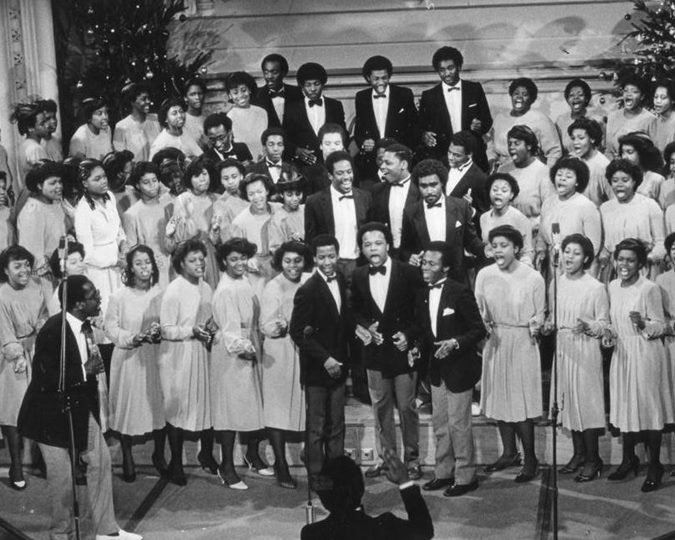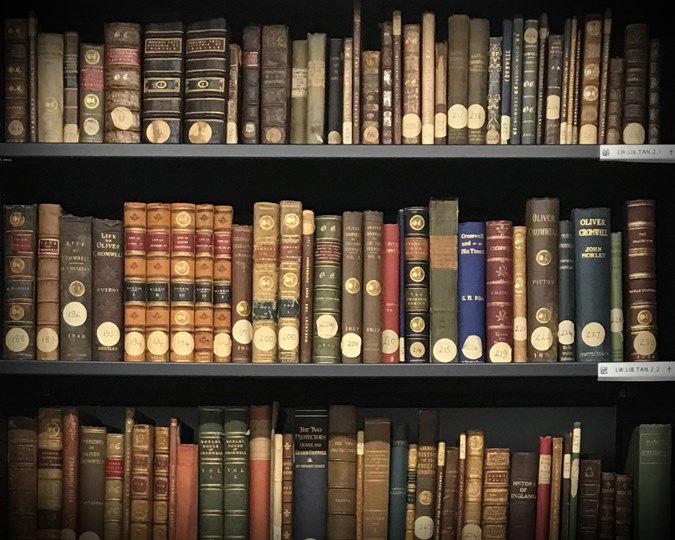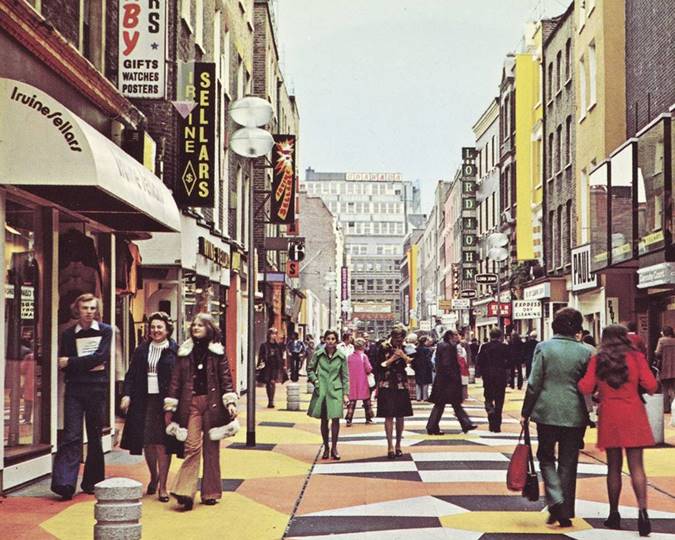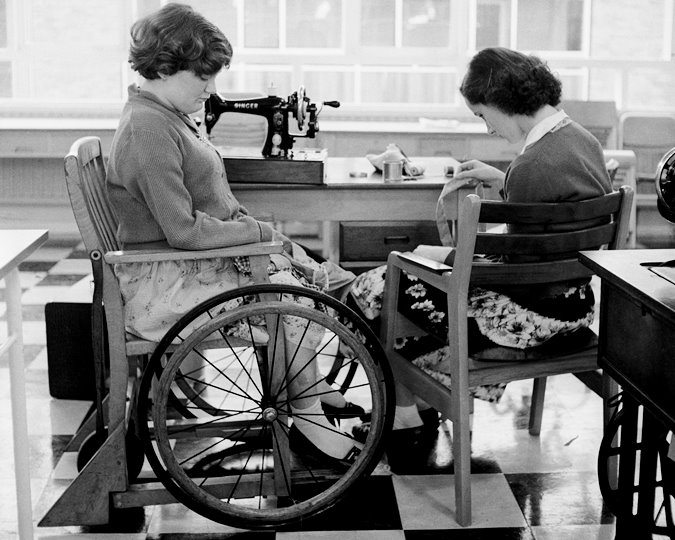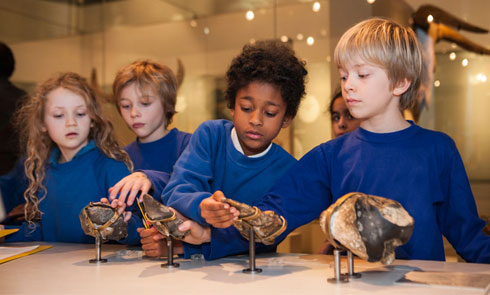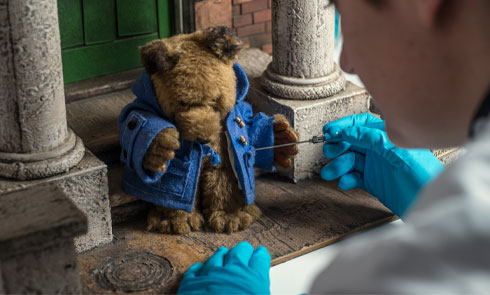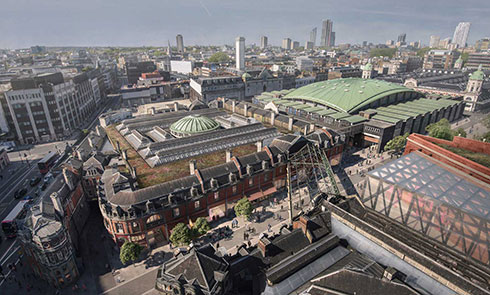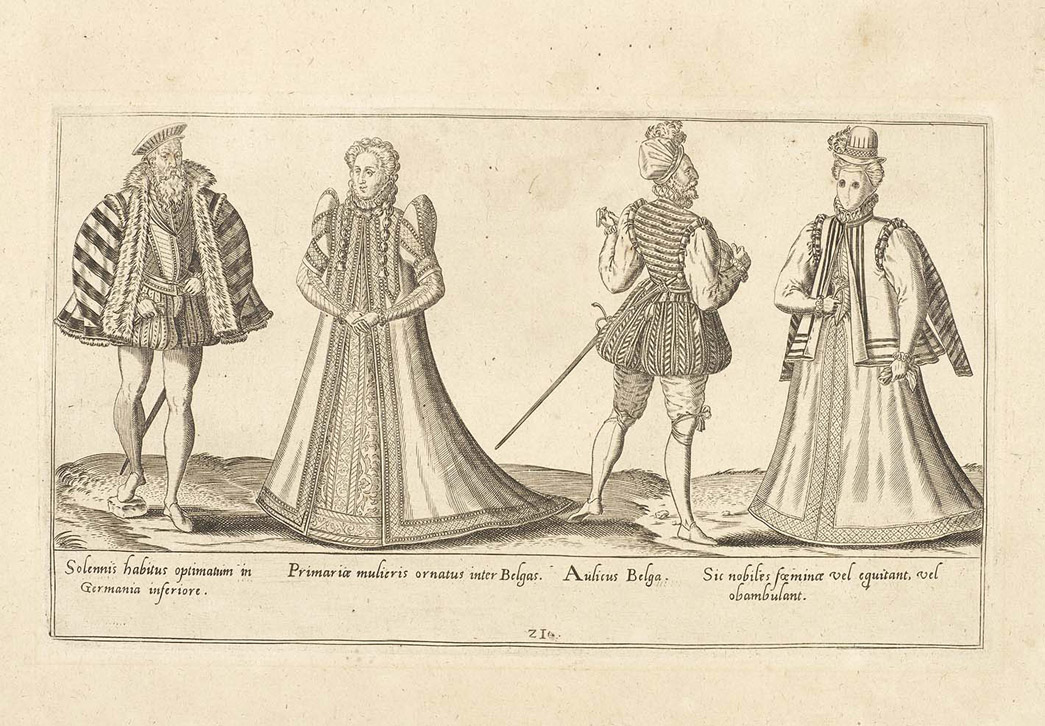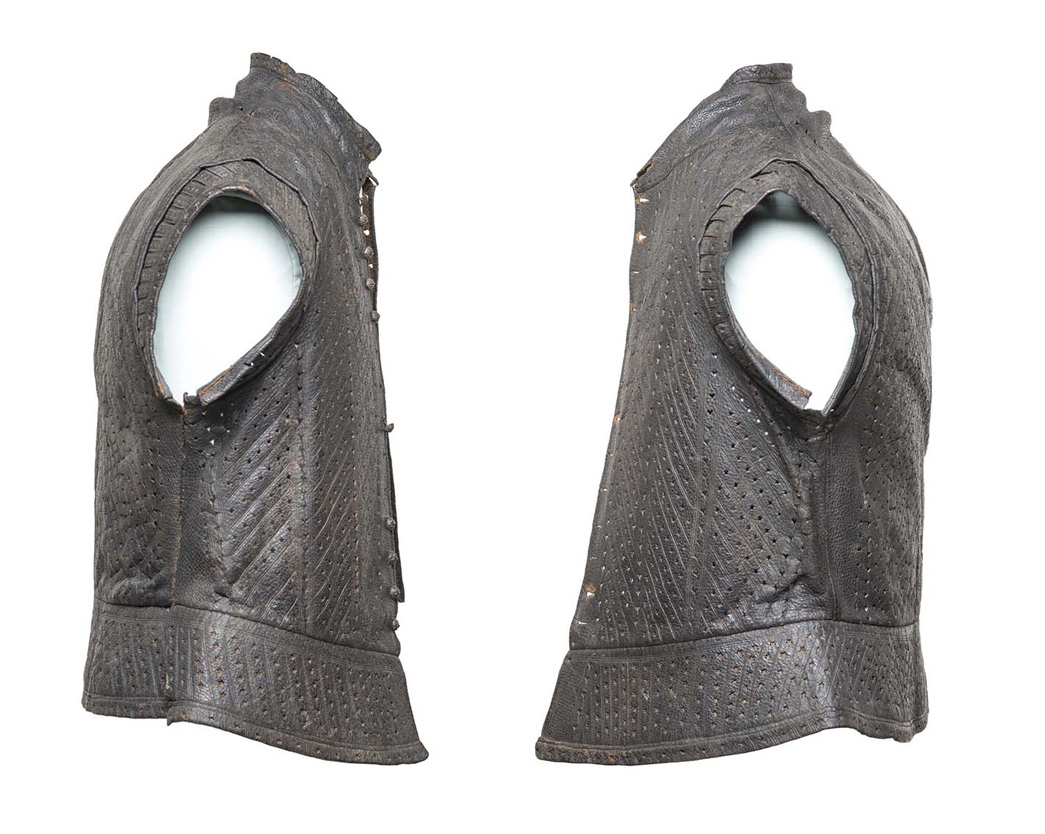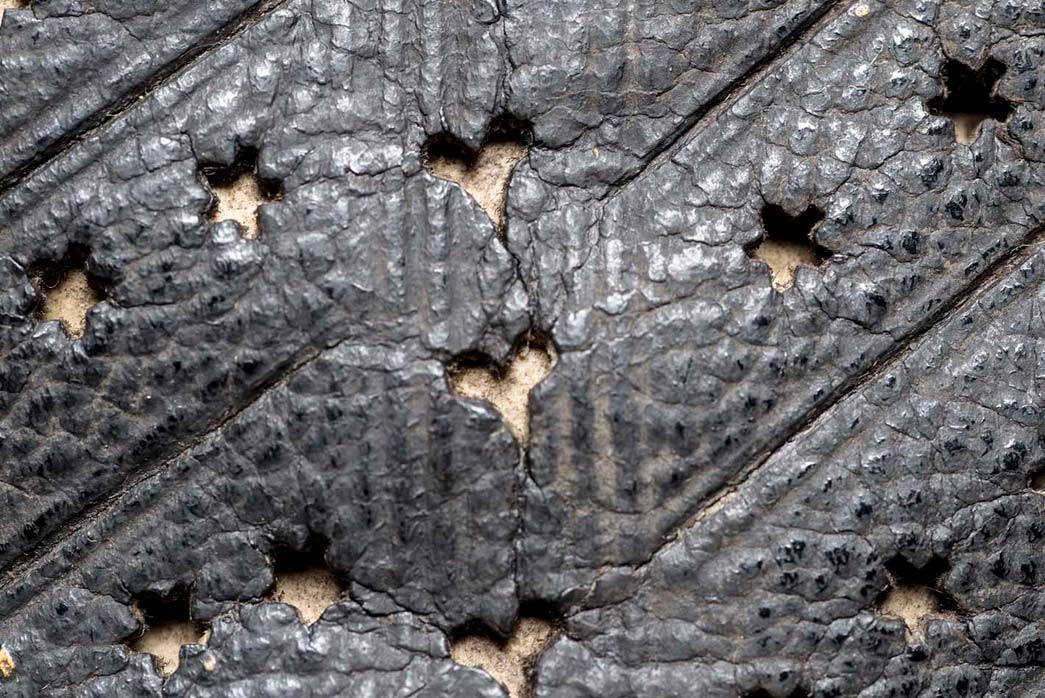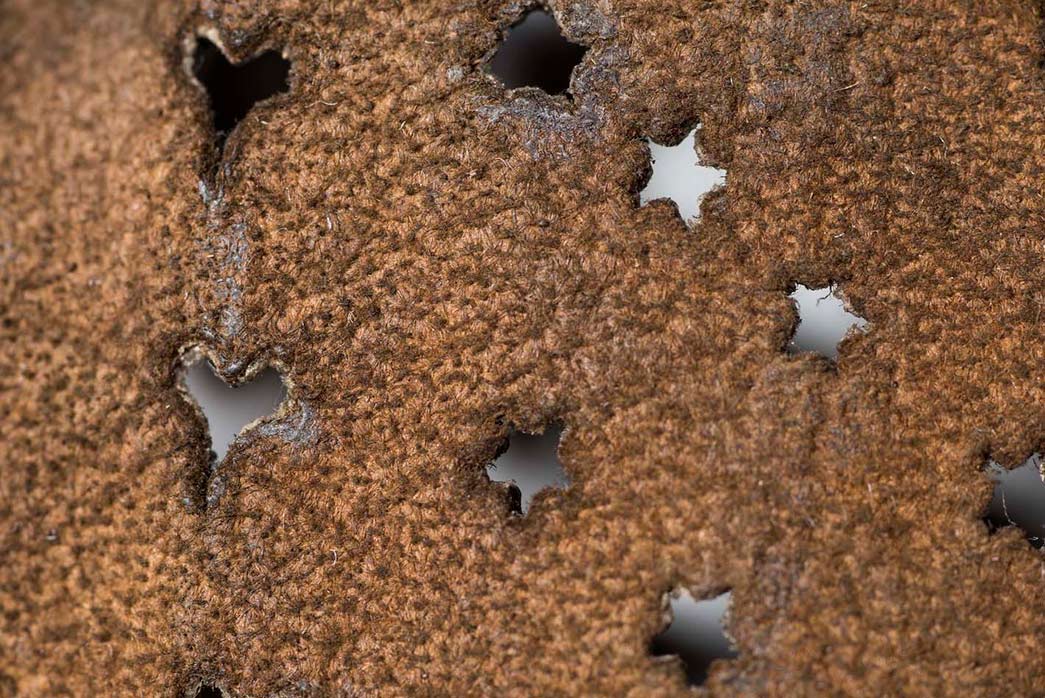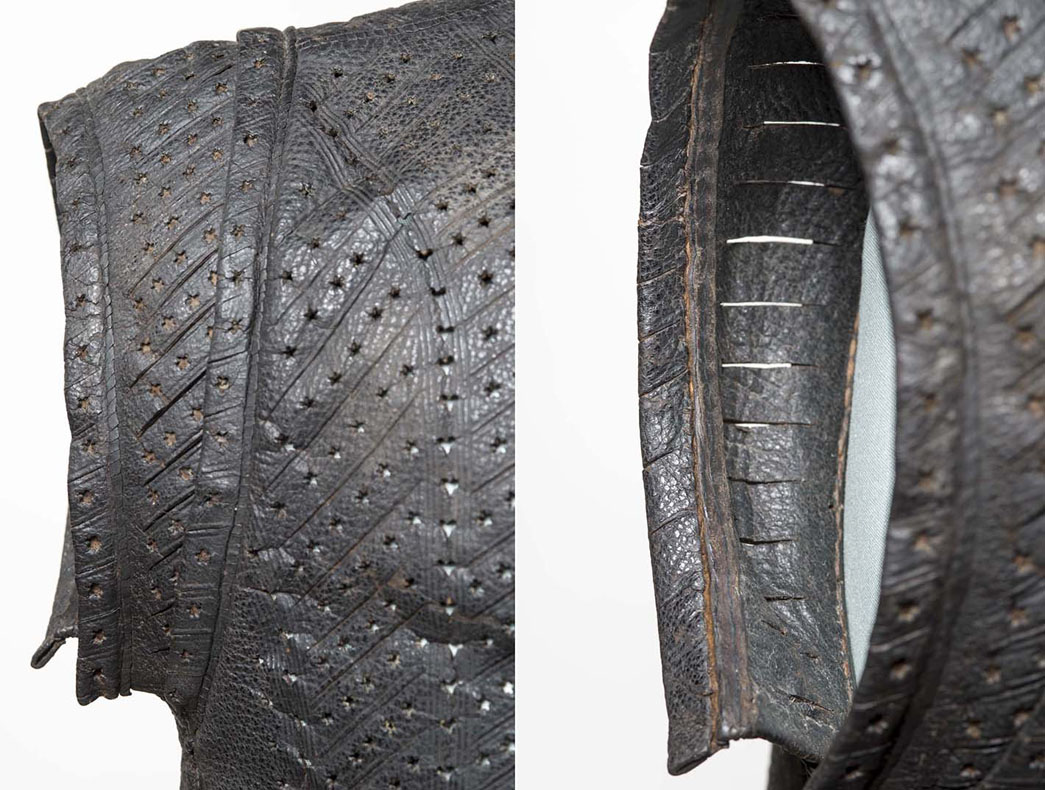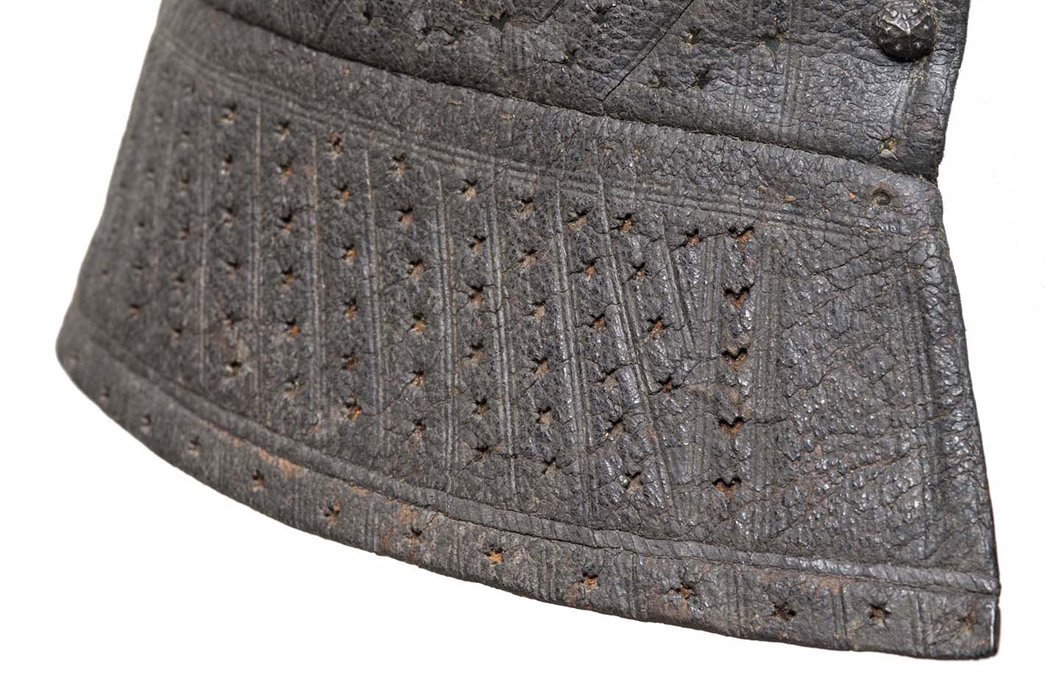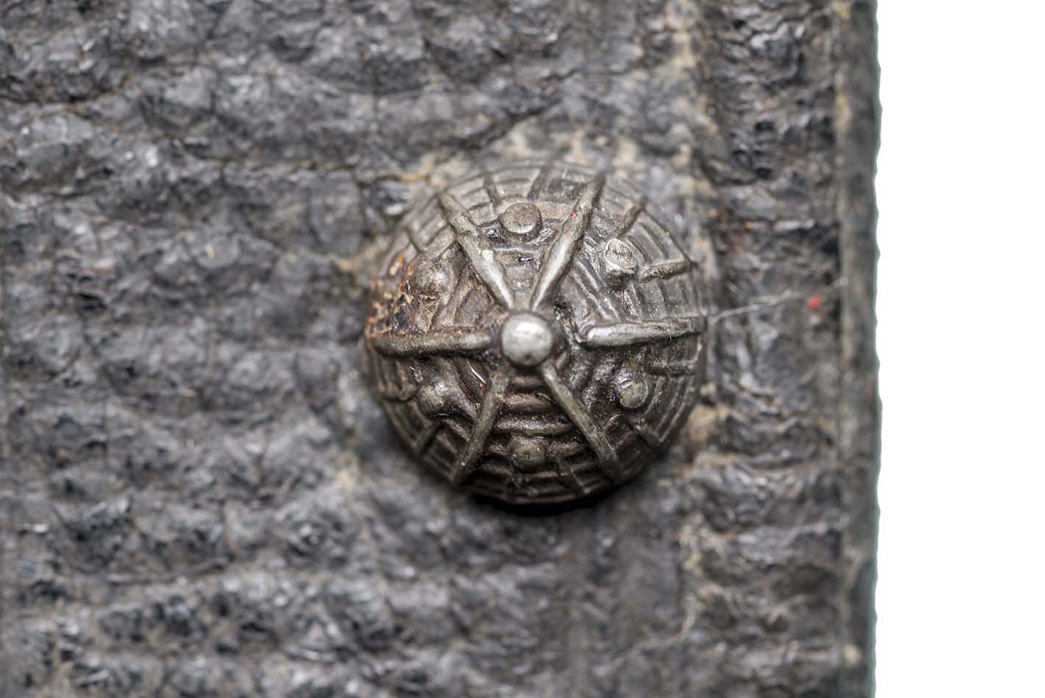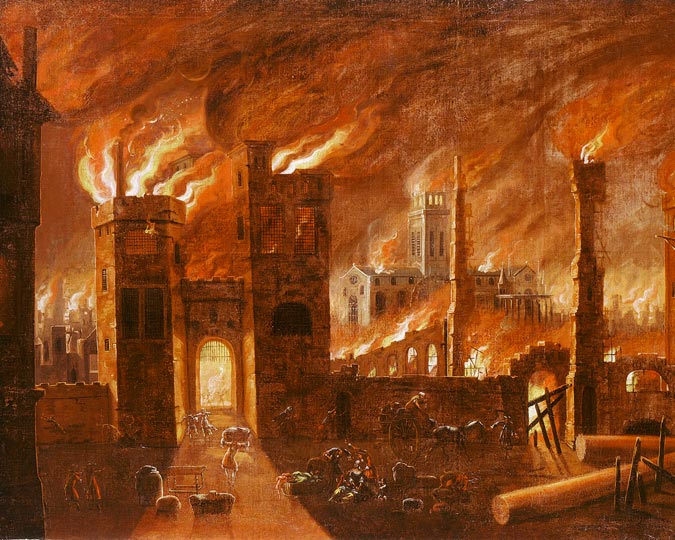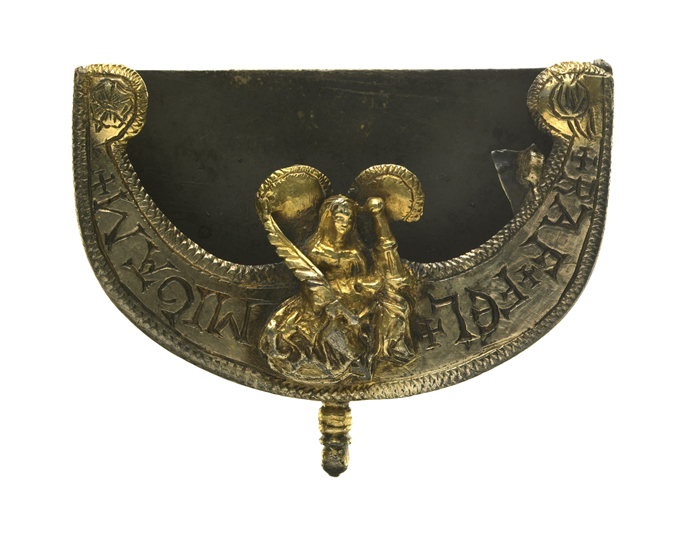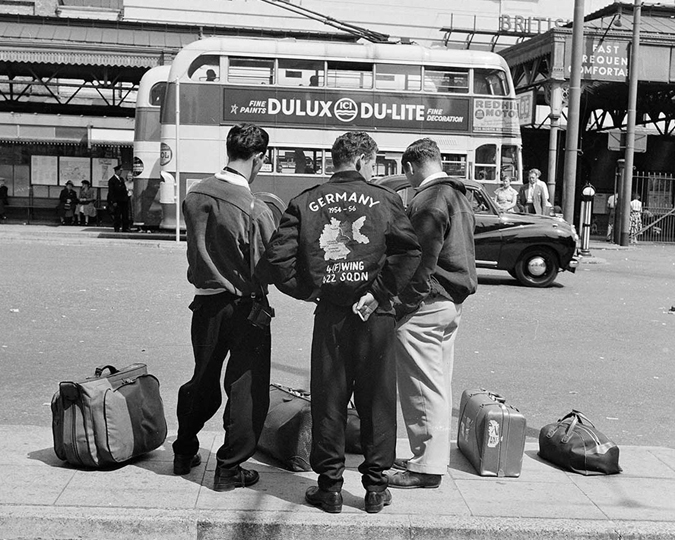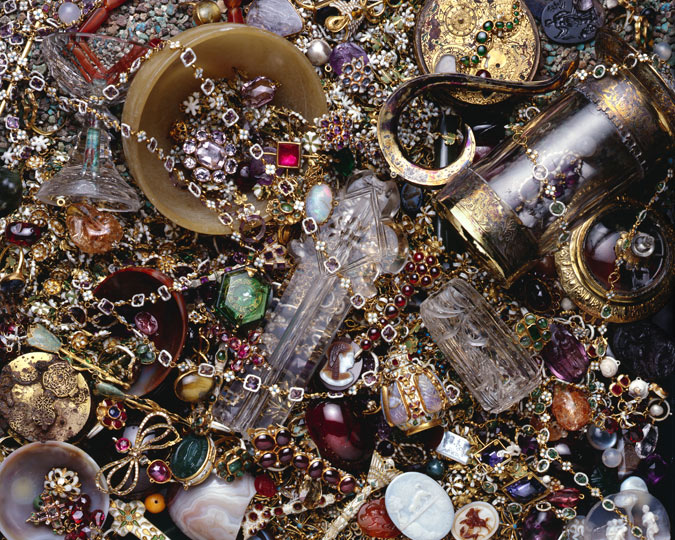This leather jerkin cut a dash in the 16th century and inspired fashion expert Janet Arnold. Beatrice Behlen gives this jacket the grilling of its life.
Most years in the spring I'm contacted by students hoping to ‘reconstruct’ a historic garment for the Costume Society’s Patterns of Fashion Award. As it says on the Society’s website, the award ‘honours the work of dress historian Janet Arnold (1932-1998)’ whose Patterns of Fashion books probably enticed more than one person to enter the world of costume making or history-of-dress-studying. In case you are not one of those, Janet Arnold went to many dress collections around the world to produce patterns of select objects, which she published in a number books together with beautiful line drawings.
Sadly, quite a few of the objects Arnold examined at the Museum of London are now in a fragile state and cannot be studied, at least not by a large number of students each year. We therefore decided a few years ago to make more images and measurements of those objects available online (I know, I know – looking at photos is very unlike analysing the real thing …). We did not have time to take our famous leather jerkin off display, but this omission has recently been rectified.
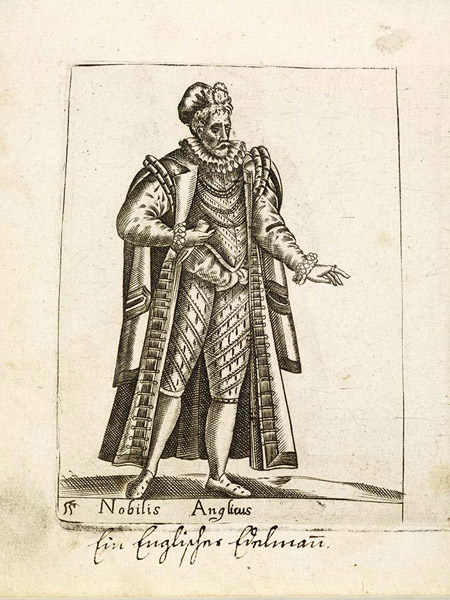
What is a jerkin, some of you may wonder? The exact origin of the word seems to be unknown. Dr Johnson ignored it – when he published his dictionary in 1755 it was probably not a word in common use. Unsurprisingly jerkins make the odd appearance in Shakespeare’s plays. The term usually refers to a sleeveless outer garment for a man, which is mostly, if not always, made of leather. Jerkins were popular in the second half of the 16th century and were worn over a doublet, a sort of short jacket with long sleeves. This 1589 engraving of an English Nobleman – Nobilis Anglicus for the Latin speakers amongst you – shows this quite well.
These Frenchmen from 1581 might also be wearing jerkins (it would have helped if they had left off their capes). To be European about it, I’ll give you some 1578 Belgian, English and Dutch military types and below a Belgian Prince (Aulicus) who shows what a jerkin looked like from the back in 1577.
But you are not just confined to look at 16th century prints anymore (not that there’s anything wrong with that). Textile conservator Melina Plottu, assistant curator Natasha Fenner and photographer Richard Stroud worked together to take photos showing the jerkin inside and out and we thought we would share some of the images with you here. First up a few shots that give you an idea of the entire object.
Then some details of the pinking – the stamping of decorative holes into the leather with a pinking iron (here is pinking in action inspired by our jerkin). I presume the first detail shows the tabs (the parts at the bottom of the jerkin) as the main body of the garment is made up of a single layer of leather only.
The entire collection of photos is on the jerkin’s Collections Online page. And of course you can still come to the museum and see it on display in our Medieval London gallery.
I hope you enjoyed this little excursion into the Tudor leather world. If you have indeed ‘reconstructed’ our jerkin, please let us know. Any comments on our jerkin – or jerkins in general – are very welcome (and so are corrections, honest!).
PS: My colleague Jackie Keily, our leather expert, has suggested the following for further reading:
Alison Nailer, ‘Items of dress – 3.1. Jerkins’, in Geoff Egan, Material Culture in London in an age of transition: Tudor and Stuart period finds c. 1450-c.1700 from excavations at riverside sides in Southwark,
MOLAS Monograph 19, 2005, pp. 17-21
Marian Foster, ‘Leather Jerkins’, in Julie Gardiner with Michael J. Allen, Before the Mast: Life and Death Aboard the Mary Rose, Volume 4 of The Archaeology of the Mary Rose, 2005, pp. 37-55
PPS: In case you were wondering about the title of this post, it is from the works of the French barber surgeon Ambroise Paré (c.1510-1590), published in English in 1634. Paré described disguising himself during the siege of Hesdin in 1553:
… and for fear of being known, I gave a velvet coate, a Satin doublet, a very fine cloth cloak lin’d with velvet, to a Souldier, who gave me a scurvy old torne doublet cut and slasht with using, and a leather jerkin well examined, and an ill favoured hat, and a little cloake …
In the French version, Paré wrote that he had been given ‘un vieux pourpoint tout déchiré et déchiqueté par l’usure, un collet de cuir en lambeaux, un chapeau de mauvaise qualité et un petit manteaux’. I have seen ‘collet’ being translated as collar, not jerkin, which does not really make sense in this context (‘en lambeaux’ means ‘in tatters’). Have a look at the entry in this 1660 dictionary just for amusement.
Love fashion? Subscribe to our free fashion newsletter to read more stories from our collections, and see upcoming events and exhibitions.

